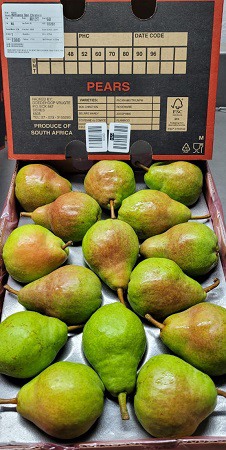 South African pear farmers have needed a good season like the current one: it’s a seller’s market for pears in Europe, where domestic pear stocks will soon run out completely, says Marnus Schoeman, general manager: marketing and sales at Good Hope Fruit.
South African pear farmers have needed a good season like the current one: it’s a seller’s market for pears in Europe, where domestic pear stocks will soon run out completely, says Marnus Schoeman, general manager: marketing and sales at Good Hope Fruit.
Right: Blush BC pears
The Ceres-based company which represents 22 apple and pear producers (and 52 citrus producers) in the Western Cape, sent the first pears there in week 2, and due to strong demand, they have been accelerating their pear calendar to accommodate demand. Abate Fetel, Packhams, Doyenne du Comice and the last Cheeky pears are currently harvested.
“The earlier you’re in the market, the better the prices. It seems to be a race against time. Usually, we’d ship Abate Fetel only week 9, but this year due to the big demand we started shipping in week 7. A lot of the Abate and BCs were picked into export bins in the orchard to ensure that no time was wasted.”
Pear volumes are up on last year, and although a size smaller, fruit are much cleaner than last year and it’s a great pear and apple crop they’re taking off, he says.
China presents excellent blush pear opportunities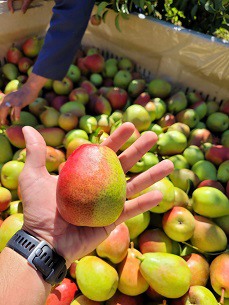 “We’re very excited about the new access for pears to China. We hope to have finalization by the end of February. We’d have liked to already have Cheeky pears in the market, but we’re waiting for the go-ahead.”
“We’re very excited about the new access for pears to China. We hope to have finalization by the end of February. We’d have liked to already have Cheeky pears in the market, but we’re waiting for the go-ahead.”
Right: Cheeky pears
He expects that many South African pear growers will be sending Forelle to China. “Pear prices look good and our clients, a combination of wholesale and retail, are asking us for pears. They’re looking for sizes 60, 70, 80s which is ideal for us because it’s where our Forelles usually peak.”
The downside, he remarks, is that it might clash with their large Canadian programmes.
Their biggest pear clients are in France, Italy, and the Netherlands. In the Middle East, Saudi Arabia & Iraq are the markets for small Rosemaries, with pears also supplied to Dubai, Oman, Bahrain, and the Far East.
The absence left by Argentine and Chilean pear exporters stymied by logistical challenges (even more severe than that of South Africa), are creating opportunities in especially Russia, India, and the Middle East.
Old niche pear cultivars show their worth in a well-rounded portfolio
Packhams still constitute the bulk of Good Hope Fruit’s pear volumes, probably to be overtaken by Forelle at some point. The focus in the industry has moved to summer pears and coloured fruit, mirroring the trend towards bi-coloured apples.
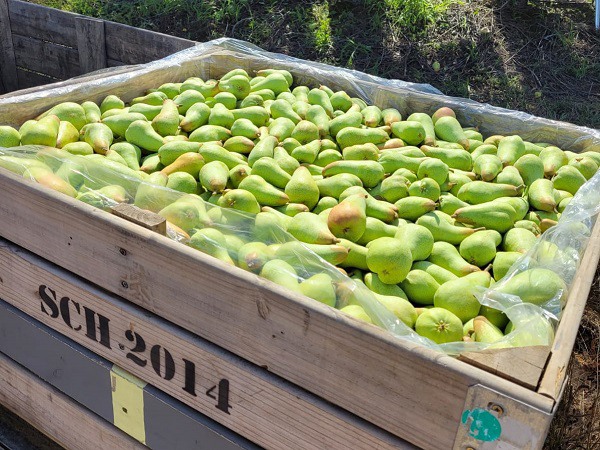 A bin of Abate Fetel pears (photos supplied by Good Hope Fruit)
A bin of Abate Fetel pears (photos supplied by Good Hope Fruit)
That said, the importance of a niche cultivar like Abate Fetel (discovered in 1866 by French Priest Abbé Fetel) is emphasised in a season like this. Many growers have over the years removed their Abate Fetel trees, both in South Africa and in France and Italy, the main markets for the cultivar. In the Good Hope Fruit group there are still growers with Abate orchards as well as Doyenne du Comice orchards, another old cultivar which is solely packed for France, Marnus notes.
The equanimity of the pear category stands in contrast to the ever-tightening regulations around apples, he remarks. “Our pear and apple categories grow every year, but we’ve noticed that apples are becoming increasingly challenging. Colour regulations become more stringent every year and consequently, the net farming income on certain pear cultivars is surpassing that of apples.”
Expected change to EU orange protocol to put major strain on cold storage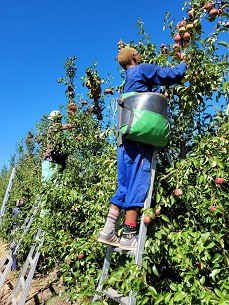 Good Hope Fruit also handles citrus from 52 producers across the Western Cape, accounting for 3.4 million cartons in a season. It will start by the middle of April with Satsumas, followed shortly by navels and clementines by around week 17.
Good Hope Fruit also handles citrus from 52 producers across the Western Cape, accounting for 3.4 million cartons in a season. It will start by the middle of April with Satsumas, followed shortly by navels and clementines by around week 17.
The citrus industry expects major changes to the coming orange campaign in the EU when oranges might have to be placed under cold treatment regulations.
“We do expect a change, I think it’s inevitable. The industry hopes for no new cold treatment regulation, but the draft amendment to this Regulation includes a mandatory requirement that all oranges from third countries in Africa and Israel be subjected to cold treatment for minimum 16 days at a temperature between 0 and -1 degrees Celsius.”
The pressure on the country’s cooling capacity is going to have a big influence on apples and pears as well, he notes, as storage space will be taken up by citrus.
“What counts in our favour, is that we have a lot of apple and pear cold storage space in Ceres which we can use for citrus, and it’s something we already did last year,” he says, noting that they are well-acquainted with citrus to cold treatment programmes, notably to the USA in their case.
“But Europe is our biggest market on oranges and those volumes will take up extra capacity. It’s going to be severely challenging.”
Depending on the EU regulation, they are planning to switch some shipments to conventional (reefer) shipping of citrus to the EU from around week 24 to week 34.
He points out that the industry has been planning its capacity based on the anticipated and robust natural growth in citrus volumes. “The change in regulation will now have an additional impact on cold storage capacity, above and beyond the natural growth we’d been planning for.”
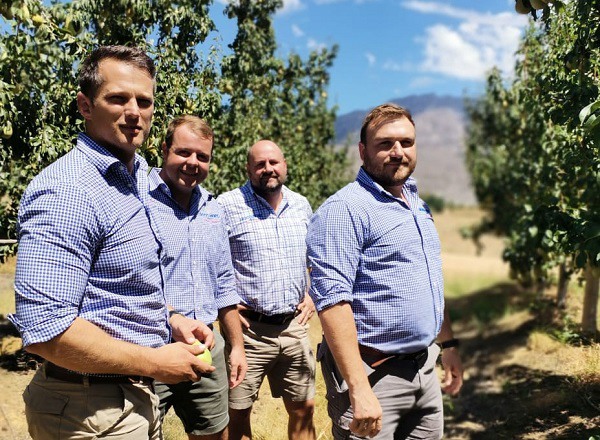 Good Hope Fruit's export managers in a block of Abate Fetel: Marnus Schoeman, Melt van Schoor, Anroux Smit and Jan Ras van der Linde
Good Hope Fruit's export managers in a block of Abate Fetel: Marnus Schoeman, Melt van Schoor, Anroux Smit and Jan Ras van der Linde
The industry has adopted a back-to-basics approach to cost pressure with the big focus on logistics, he says: getting equipment or space on shipping schedules, the basics that have become so hard to do.
“This year I expect that the domestic orange market will come under pressure because of product that could not be shipped. I get the feeling that we could also see the same thing on Royal Gala apples, with the difficulty to ship to Bangladesh, which is a big market for Royal Gala.”
Alternatives are being investigated and plans must be made as soon as possible, he adds.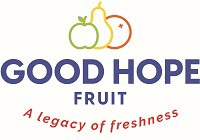 For more information
For more information
Marnus Schoeman
Good Hope Fruit
Tel: +27 23 315 5293
Email: [email protected]
https://ghfruit.co.za/
